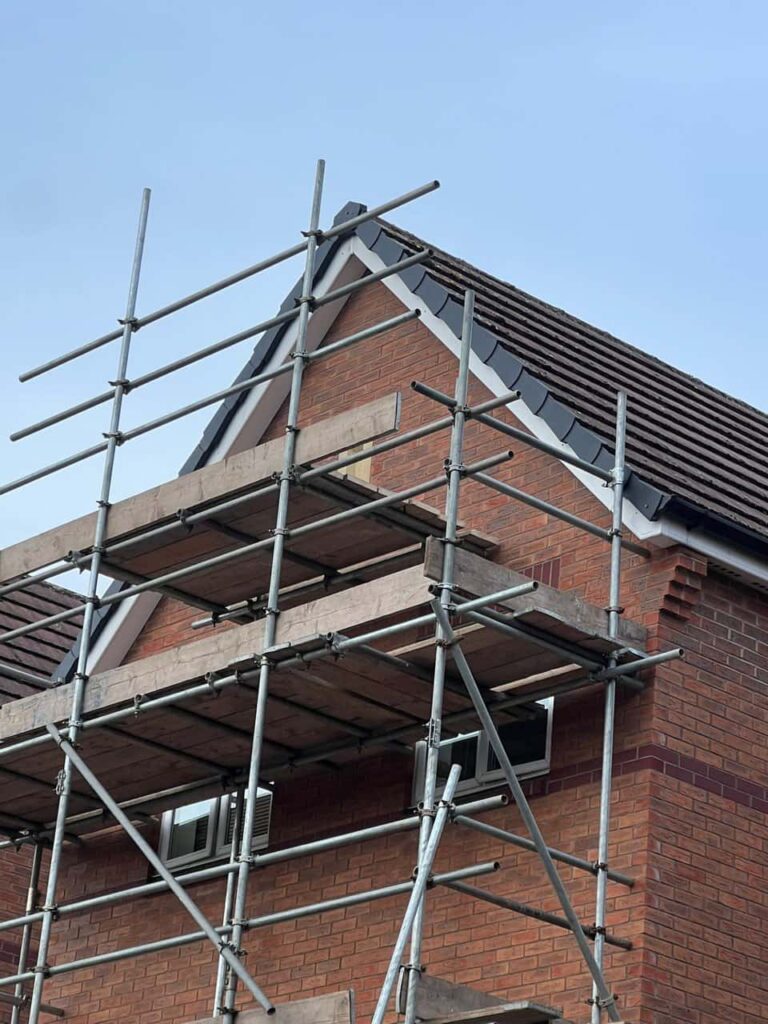Roof leaks are one of the most frequent and frustrating issues homeowners face. Even a small leak can lead to significant damage if not addressed promptly. Understanding the typical causes of roof leaks—and how to spot them early—can save you time, money, and stress. At Newmarket Roofing Repairs, we help homeowners across Newmarket, Suffolk identify and resolve roofing issues before they become costly repairs.
Below, we outline seven of the most common sources of roof leaks and how to detect them effectively.
1. Damaged or Slipped Roof Tiles
Broken, cracked, or slipped roof tiles are one of the most obvious causes of leaks. They allow rainwater to bypass the protective outer layer and seep into the underlying structure.
Signs to look for:
- Visible gaps or displaced tiles from ground level
- Pieces of tile found in gutters or on the ground
- Damp patches on the ceiling after heavy rain
Regular inspections can catch tile damage early, especially after storms or strong winds.
2. Flashing Failure
Flashing is the metal or leadwork used to seal joints around chimneys, skylights, and roof valleys. When it becomes loose, corroded, or poorly sealed, it can create direct paths for water ingress.
Warning signs:
- Water stains near chimneys or roof junctions
- Visible corrosion or lifting of flashing strips
- Damp patches forming along walls or in corners of loft spaces
Properly installed flashing is vital for long-term waterproofing, especially in complex roof areas.
3. Blocked or Overflowing Gutters
While not strictly part of the roof covering, gutters play a key role in directing rainwater away from your property. If they’re blocked or broken, water can back up and leak into the roof edge or walls.
Symptoms include:
- Water spilling over gutter edges during rainfall
- Moss, leaves, or debris visible in gutters
- Peeling paint or damp on external walls
Keeping gutters clean and well-maintained prevents water from finding unwanted entry points.
4. Faulty Roof Valleys
Roof valleys—the internal angles where two roof slopes meet—are high-flow areas that need robust sealing. Poor workmanship or material deterioration can result in leaks forming along these joints.
Signs of valley issues:
- Damp patches forming along ceiling joints
- Discolouration or mould growth near valley areas in lofts
- Visible splits or damage in the valley lining from above
At Newmarket Roofing Repairs, we inspect valley sections with care, as they are often overlooked but prone to significant leakage.
5. Damaged or Aged Felt Underlay
The felt underlay beneath roof tiles adds a critical second layer of defence. Over time, it can deteriorate or tear, particularly in older roofs.
How to identify:
- Persistent leaks despite intact tiles
- Signs of sagging or damp in the loft
- Unpleasant musty smells coming from the attic area
While this damage may not be visible externally, it is a common cause of internal water damage and should be checked during a roofing inspection.
6. Cracked or Poorly Sealed Chimney Stacks
Chimneys can be a major weak point in your roof. Damaged brickwork, missing mortar, or deteriorated flashing around the stack can all let in water.
Indicators of chimney-related leaks:
- Damp patches on chimney breasts or adjacent walls
- Moss growth on the stack or roofline
- White salt deposits (efflorescence) on internal or external brickwork
Chimney repairs and leadwork renewal are specialist services offered by Newmarket Roofing Repairs to address these specific risks.
7. Skylight or Rooflight Leaks
Skylights enhance natural light, but if not correctly installed or sealed, they can become leak-prone areas.
Common signs:
- Water dripping around the skylight frame
- Fogging or condensation between glazing panes
- Damp patches or mould on nearby plasterwork
Regular resealing and proper fitting prevent leaks and extend the life of skylights on pitched roofs.
Conclusion
Identifying the source of a roof leak early is the best way to minimise damage and avoid costly repairs. From slipped tiles to flashing faults and valley issues, each problem has its own set of symptoms. A professional assessment is often the most efficient way to confirm the cause and carry out targeted repairs.
At Newmarket Roofing Repairs, we provide expert leak detection and roof repair services throughout Newmarket, Suffolk. If you’ve noticed any signs of water ingress or want to prevent future problems, contact our team today to schedule a roof inspection and keep your home dry, safe, and secure.
Call us on: 01638 596 581
Click here to find out more about Newmarket Roofing Repairs
Click here to complete our contact form and see how we can help with your roofing needs.

